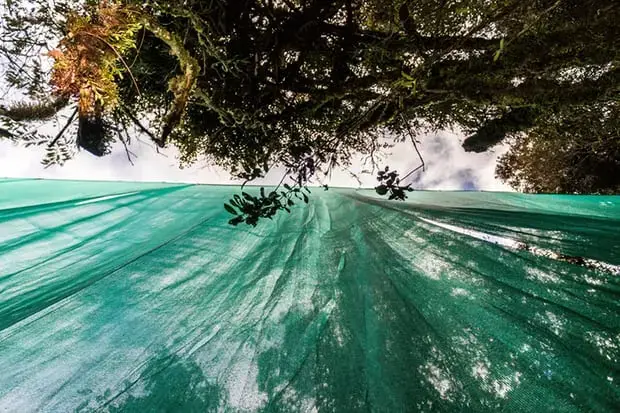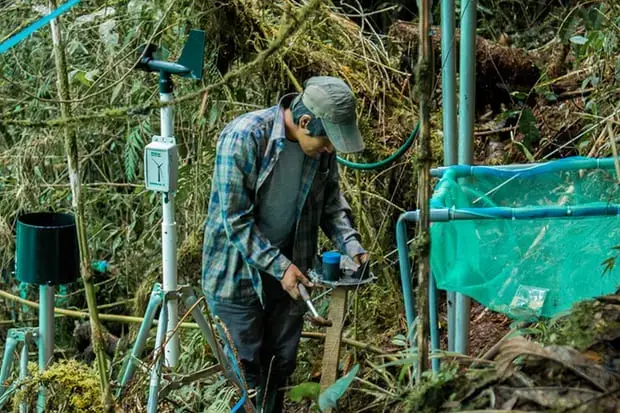
What will happen if climate change pushes clouds higher into the sky, as models predict? One ecosystem that will be seriously affected will be cloud forests – tropical jungles persistently bathed in fog.
Until now, little research had been done on the likely impacts of rising clouds, but one scientist is planning to change that using an enormous curtain strung up in the middle of the forest.
Cloud forest thrives on mountainsides at 500-4,000 metres above sea level, making up about 1% of the world’s forest in a tropical band that hugs the equator. But, though the area covered is small, the forests are vital to much broader regions. For instance, they help regulate rivers across vast tracts of lowlands, absorbing moisture into spongy soil when the weather is wet and releasing water when it’s dry. And they provide habitats for many birds, such as the coppery headed emerald hummingbird of Costa Rica and the elfin wood warbler of Puerto Rico, both of which live only in cloud forests.
Many scientists believe the process forcing clouds higher may already have begun. This would diminish a cloud forest’s moisture and it’s uncertain whether forests could successfully migrate uphill in response. Examining the impact of clouds relocating is critical to understanding the future of the forests.

Dan Metcalfe, a biology professor at Lund University in Sweden, wants hard data so he can determine what will happen to the forests that remain if the models are correct. He explains he’s trying something never before done: “an experimental approach where we actually physically try to remove clouds from a portion of the forest”.
Metcalfe had planned to encircle a square plot twice the size of a basketball court with a mesh curtain suspended from 10-storey phone poles at each corner. Fog would condense on the fabric, leaving the interior moisture-starved. He chose the Wayqecha Biological Station, a cloud forest research centre 3,000m above sea level in Peru. But he didn’t factor in the difficulty of operating heavy equipment at Wayqecha. Precipitous slopes and fragile soil prevent hauling in the kind of drill rig that could set corner posts deeply enough for big nets. No roads penetrate to Wayqecha’s groves, only footpaths.
Metcalfe realised he’d have to install bolted metal lattice towers. These can be hand-carried in pieces, then assembled on site. They can be built atop slender footings and stabilised by guy wires installed with lightweight equipment. But they’re expensive. He couldn’t afford two, let alone four, and feared that he might have to cancel the project. But then Metcalfe heard that not long before, the station had suffered a misfortune that could help him.
Wayqecha already had three lattice towers, supporting a catwalk over a ravine. Until recently, the walkway had included a fourth tower, but it had been toppled by a landslide. However, the structure’s struts and decking were undamaged. Rather than completely enclosing a plot in nets, Metcalfe realised he could suspend a single mesh curtain across the path of mist blowing up a valley. The fog-catching curtain would dangle from a cable stretched between one of the undamaged towers and a new one he’d build out of the one that had fallen.

Metcalfe encountered obstacle after obstacle even carrying out his plan: a key member of his construction team got sick and needed months of recovery; a fire destroyed expensive gear; and Peruvian customs balked when they saw that a shipping container of construction supplies included the bow and arrow he’d need for stringing cables. In the four years since he started the project, his wife had a child. And then another. It got tougher to leave home for Peru.
But finally, the curtain is nearly done. A crew built the tower in September and the last step, suspending the curtain above the forest floor, was completed at the end of October. Soon, Metcalfe will be able to shed light on the future of the forest.







